While I travel, here is a tribute to the athletes of the 1996 Atlanta Olympic Games.
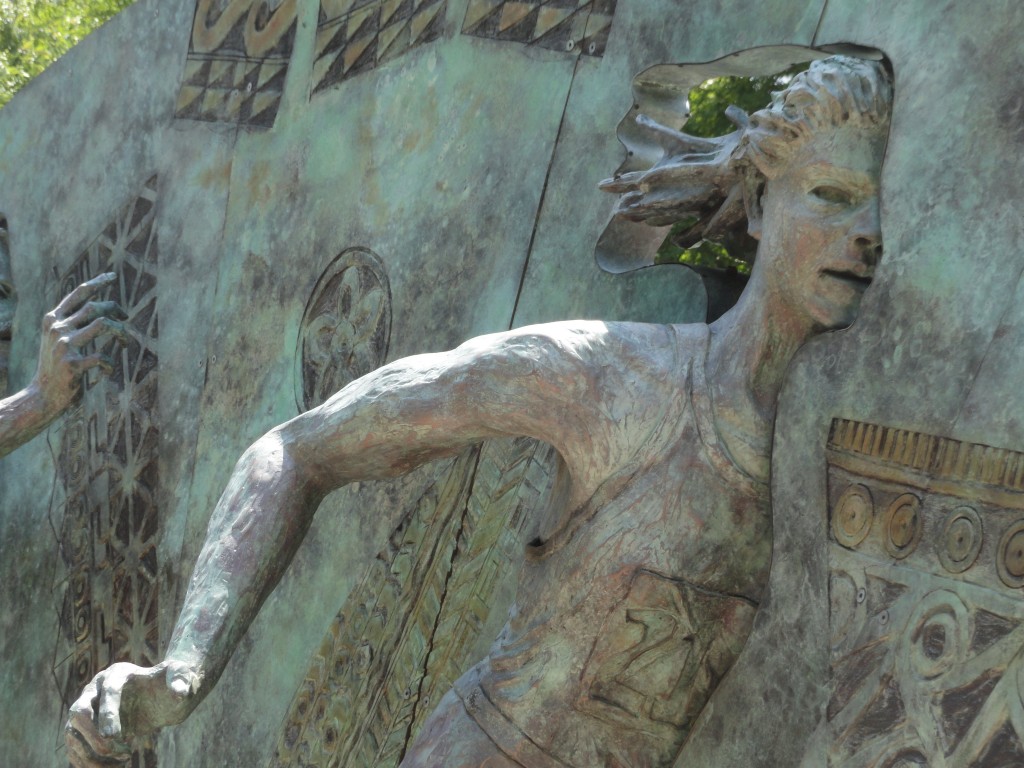

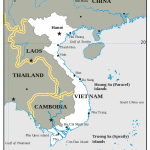 In my last post I reminisced about my first real traveling experience out of the USA – to Hanoi, Vietnam. Of all my memorable experiences there I enjoyed most meeting the Vietnamese people and eating the amazing food.
In my last post I reminisced about my first real traveling experience out of the USA – to Hanoi, Vietnam. Of all my memorable experiences there I enjoyed most meeting the Vietnamese people and eating the amazing food.
After traveling half way around the world I met up with a friend who had been in Hanoi for several months already. Not one of the rare western-style hotels for me; I lived in the local dorm of the National University, which was less impressive than it sounds. The small room in a stark building down a narrow street in a corner of town not usually seen by tourists meant that I spent most of my time in the midst of the locals and experienced Vietnamese life first hand. That included the local kids begging for money (one 4 year old put on her saddest looking face for my benefit) and the occasional swarm of 10 year olds competing to offer their shoe-shining prowess to me.
Many of my meals took place on the streets. And I mean this literally – squatting on the sidewalk eating Bun Nhan (duck noodle soup), Bun Oc (snail and noodle soup) or Bun Mum Tom (noodles dipped into a ghastly smelling shrimp paste). The proprietor would grab a handful of noodles, throw them briefly in boiling broth (with the chicken or duck bones still swimming around), and then ladle it into a bowl. You grabbed your own chopsticks from a cup holding a dozen or so (making sure you wiped them off before using, if you’re smart). Clean up is easy, you just throw everything on the ground. Generally an open sewer ran along the curb and everything went into it, including children relieving themselves as their proud parents looked on. As startling as this may seem to westerners, it was a normal occurrence. It also emphasized what was Vietnam’s greatest resource at the time – its people. There were so many people in Hanoi that each evening an army of men and women came out with large straw brooms and swept up the city. They even separated out usable materials from materials that have unquestionably reached the final state of being trash. Quite amazing.
Here’s a quick look at the street food in Hanoi posted on YouTube by uncorneredmarket. Note that this looks exceptionally upscale compared to most of the spots I ate.
Though my time in Vietnam was way too short I didn’t just stay in Hanoi. Hopping on the back of one of the Xe Om motorbike taxis I had rented for the day ($20 for two, a month’s income for the drivers), I ventured far out from the city to two of the small villages. Bach Trang specialized in making pottery, most of which was brought into Hanoi on bicycles or carts pulled by an ox or pony. The other village was called Nhing Heip, which was reached by an extremely bumpy Xe Om ride over rough roads. Nhing Heip is where they make fabric, and was the location of one of my fondest memories from the trip. Because very few westerners ever make it there, my oddly pale face attracted a great deal of attention. This was especially true with three little girls of about 4 years old who would run up to me and then run away and push their friends toward me, all the while laughing hysterically. My companion informed me that they kept saying “Look how white he is.” The commotion they were causing led to one of the girls’ grandfather seeing us and inviting us into his house for tea.
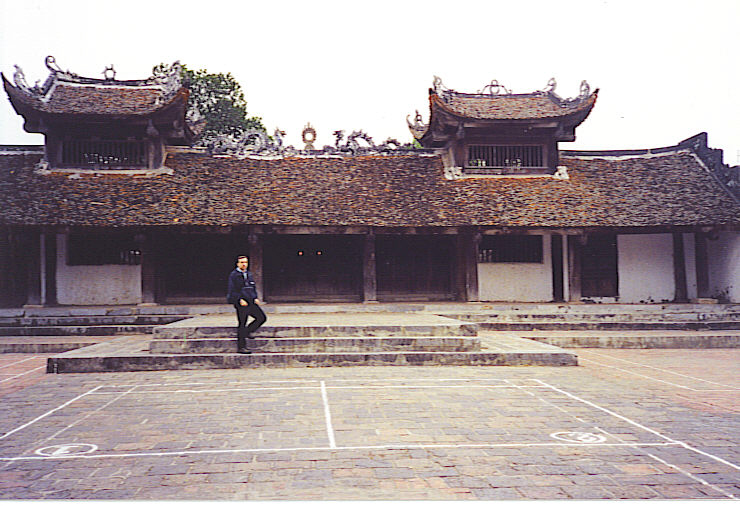
The house was actually a single room that resembled more a garage with a simple fabric covering the large opening. Over the course of the next 20 minutes or so we drank many cups of tea while he chatted away in Vietnamese about how America is rich and Vietnam is very poor but they work very hard (he was obviously proud of his culture). Of course, most of this I found out after the fact from my companion since I had learned only about 10 words of the language in my four days in Vietnam. I had no idea what he was saying but I enjoyed it immensely. It was a most delightful and memorable experience and one that I will treasure forever.
A conversation I didn’t understand of which I would be reminded years later when I engaged in another discussion where neither I nor the gentleman I was conversing with had any idea what we were saying to each other. More on that event in a later article.
More on my travels.
David J. Kent is an avid science traveler and the author of Lincoln: The Man Who Saved America, now available. His previous books include Tesla: The Wizard of Electricity and Edison: The Inventor of the Modern World (both Fall River Press). He has also written two e-books: Nikola Tesla: Renewable Energy Ahead of Its Time and Abraham Lincoln and Nikola Tesla: Connected by Fate.
Check out my Goodreads author page. While you’re at it, “Like” my Facebook author page for more updates!
Follow me by subscribing by email on the home page. Share with your friends using the buttons below.
 I admit that I grew up a rather sheltered child in a small New England town. After many years where world travel was defined as an occasional weekend jaunt a stone’s throw into Canada, I suddenly found myself flying halfway around the world to Vietnam. And not just any place in Vietnam – Hanoi, the former capital of the Communist North that became the new capital of the reunified Socialist Republic of Vietnam. To provide even more perspective, this was in late 2000, before the United States opened up trade relations and long before Vietnam joined the World Trade Organization to become part of the modern world. It was still the period where memories of the “American War” were still toggling around in the minds of every surviving 50 year old male. Yes, I went to Hanoi before going to Hanoi became cool.
I admit that I grew up a rather sheltered child in a small New England town. After many years where world travel was defined as an occasional weekend jaunt a stone’s throw into Canada, I suddenly found myself flying halfway around the world to Vietnam. And not just any place in Vietnam – Hanoi, the former capital of the Communist North that became the new capital of the reunified Socialist Republic of Vietnam. To provide even more perspective, this was in late 2000, before the United States opened up trade relations and long before Vietnam joined the World Trade Organization to become part of the modern world. It was still the period where memories of the “American War” were still toggling around in the minds of every surviving 50 year old male. Yes, I went to Hanoi before going to Hanoi became cool.
It was in these novel surroundings that my first taste of world travel gave me some of the fondest memories that remain with me today.
Bigger than I expected, Hanoi itself was incredibly busy. Thousands of people on motor scooters and bicycles crowded every street. Many of them wore scarfs over their mouths and noses because the air was so polluted. As I rode around town on my Xe om (a kind of motor bike taxi), it was interesting to contrast the many tiny streets teeming with people doing business on the sidewalks with the ornate mustard-yellow official buildings left over from the many years of French occupation. The mausoleum of Vietnam’s revered former leader Ho Chi Minh (called “Uncle Ho” by the locals), had a prominent place in a large square. Usually visitors can see his preserved body there, but at the time of my trip he was in the middle of an official face-lift, so to speak, so a visit to the adjacent museum had to suffice. Within its halls I wandered into a back room where local musicians played traditional Vietnamese instruments and sang haunting melodies. After the show one attractive musician handed me, the lone westerner in the small room, a ravishing red rose and a seductive smile.
One interesting feature of Hanoi was that shops were clumped by item. By this I don’t mean just that each store sold only one type of item; I mean all the stores on entire streets sold only one type of item. In the US the norm is to find strip malls with one drug store, one shoe store, one clothing store – one of each type of item you might want to buy on a single trip. In Hanoi, one street was dedicated to selling shoes and every alcove on that street sold shoes and nothing but shoes. Other streets were designated to sell coats or silk or “gifts for the tourists.” If you didn’t like one store, you merely walked next door. To this day I still don’t completely understand the concept but I can say that I feel the warmth of the pullover jacket I purchased there.
On another street I ordered three silk shirts. The proprietor of the shop let me pick the colors from a room stacked high with bolts of the finest silk, then measured me every which way you can possibly measure a man’s upper torso. This was late one afternoon. After lunch the very next day I returned to find three perfectly handmade silk shirts that fit like they were made for me. Which of course they were. Overnight. I don’t recall how many Vietnamese dong the shirts cost me, but I do remember that it was equivalent to about $20 each.
I learned a lot while in Hanoi, but what really amazed me was the warm welcome I received from the people. Well, at least the ones that weren’t trying to charge “the rich American” three times the price paid by the locals. In my next post I’ll have more on the people – and the food – of Hanoi and an incredible tea party I had in a village outside the city. You won’t want to miss it. See Part 2 here.
More on my Travels.
Check out my Goodreads author page. While you’re at it, “Like” my Facebook author page for more updates!
David J. Kent is the author of Lincoln: The Man Who Saved America, scheduled for release July 31, 2017. His previous books include Tesla: The Wizard of Electricityand Edison: The Inventor of the Modern World (both Fall River Press). He has also written two e-books: Nikola Tesla: Renewable Energy Ahead of Its Time andAbraham Lincoln and Nikola Tesla: Connected by Fate.
Follow me by subscribing by email on the home page. Share with your friends using the buttons below.
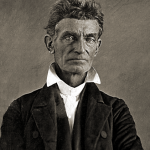 John Brown was hanged today, December 2, 1859, just a year before Abraham Lincoln was elected to be the 16th President of the United States. History has a love/hate relationship with John Brown. There were many abolitionists in the antebellum Union. To them not only was slavery wrong, but it must be abolished immediately and for all time. So Brown was not alone in that belief.
John Brown was hanged today, December 2, 1859, just a year before Abraham Lincoln was elected to be the 16th President of the United States. History has a love/hate relationship with John Brown. There were many abolitionists in the antebellum Union. To them not only was slavery wrong, but it must be abolished immediately and for all time. So Brown was not alone in that belief.
But as a radical abolitionist John Brown took this conviction to its extremes. He believed in taking definitive action – including violent action – to erase slavery from this Earth. On this date he was hanged for a raid on the federal armory in Harpers Ferry, West Virginia. His goal was to start an armed insurrection. It didn’t work. Abraham Lincoln in his epic Cooper Union Address given in February 1860 put it like this:
John Brown’s effort was peculiar. It was not a slave insurrection. It was an attempt by white men to get up a revolt among slaves, in which the slaves refused to participate.
Harpers Ferry was not the first time John Brown sought to stimulate an uprising. In 1856 he joined with others in attacking a military detachment in the Battle of Black Jack, perhaps one of the first incidents of what came to be known as Bleeding Kansas. Brown then hacked to death five pro-slavery supporters in the town of Pottawatomie, Kansas. So by the time of the failed Harpers Ferry raid John Brown was largely seen as a persona non grata by those who both agreed and disagreed with his views on slavery.
The Smithsonian Museum of American History looks at slavery and John Brown as part of its The Price of Freedom exhibition (Flash needed to view slideshow). In addition, the museum addressed how John Brown should be remembered by history as part of their Time Trial of John Brown. The YouTube video below introduces the series.
Expand the text below the video to find links to the various parts of this fascinating program. So, how should John Brown be remembered? As a violent murderer or as someone who felt the need to abolish slavery merited extreme action?
More on Abraham Lincoln.
David J. Kent is an avid science traveler and the author of Lincoln: The Man Who Saved America, in Barnes and Noble stores now. His previous books include Tesla: The Wizard of Electricity and Edison: The Inventor of the Modern World and two specialty e-books: Nikola Tesla: Renewable Energy Ahead of Its Time and Abraham Lincoln and Nikola Tesla: Connected by Fate.
Check out my Goodreads author page. While you’re at it, “Like” my Facebook author page for more updates!
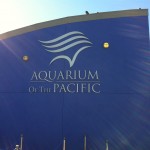 No, I don’t mean Baskin-Robbins is adding a new fish flavor to its menu (Orange Turbot, perhaps?). But the Aquarium of the Pacific becomes the 31st large public aquarium I have visited worldwide. Located in Long Beach, California, the Aquarium sits on the edge of the harbor with the Queen Mary basking in the background. Not the actual Queen, of course, but the ocean liner that sailed the Atlantic from 1936 to 1967 for the Cunard Line before being permanently moored and turned into a hotel.
No, I don’t mean Baskin-Robbins is adding a new fish flavor to its menu (Orange Turbot, perhaps?). But the Aquarium of the Pacific becomes the 31st large public aquarium I have visited worldwide. Located in Long Beach, California, the Aquarium sits on the edge of the harbor with the Queen Mary basking in the background. Not the actual Queen, of course, but the ocean liner that sailed the Atlantic from 1936 to 1967 for the Cunard Line before being permanently moored and turned into a hotel.
My tour of the Aquarium of the Pacific took place during the SETAC meeting I mentioned in previous posts here and here. It’s traditional to have a Tuesday night social event and when there is an aquarium handy it shouldn’t come as a surprise that the aquarium becomes the setting. Upon arrival I headed upstairs to see most of the exhibits before the aquarium turned down the lights in the simulated night/day cycle.
The aquarium is the largest in California and the fourth largest in the United States. Over 1.5 million people pass through its doors every year to see over 11,000 animals in more than 50 exhibits. Like most aquariums it goes way beyond just display for entertainment, offering many opportunities for education and research.
Earlier in the day the President and CEO of the Aquarium, Jerry R. Schubel, gave a rousing presentation on man’s role and obligations when it comes to protecting the seas, the climate, and the biodiversity of this planet.
Overall the Aquarium of the Pacific provides a very nice introduction to the animals and plants of the oceans, with special emphasis on the Pacific. It’s a short walk from the Long Beach Convention Center and all the accompanying hotels and restaurants. It’s well worth the visit should you find yourself in Long Beach.
Check out more on their website: http://www.aquariumofpacific.org/
More on the aquariums I have visited here.
David J. Kent is an avid science traveler and the author of Lincoln: The Man Who Saved America, now available. His previous books include Tesla: The Wizard of Electricity and Edison: The Inventor of the Modern World (both Fall River Press). He has also written two e-books: Nikola Tesla: Renewable Energy Ahead of Its Time and Abraham Lincoln and Nikola Tesla: Connected by Fate.
Check out my Goodreads author page. While you’re at it, “Like” my Facebook author page for more updates!
Follow me by subscribing by email on the home page. Share with your friends using the buttons below.
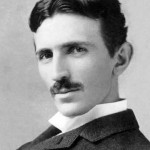 In a few weeks I will attend the annual scientific conference of the Society of Environmental Toxicology and Chemistry (SETAC). This year Nikola Tesla will go with me. And then he will leave with someone else.
In a few weeks I will attend the annual scientific conference of the Society of Environmental Toxicology and Chemistry (SETAC). This year Nikola Tesla will go with me. And then he will leave with someone else.
The conference attracts about 2500 members each year and we juggle our time between attending presentations of the latest science, attending committee meetings and other events, and attending to the myriad conversations held in the hallways of the convention center. The latter is where most of the collaboration is done. Or at least it seems that way.
There are also socials and various other events, this year including a dinner in the Aquarium of the Pacific since the conference is being held in Long Beach (and yes, I will be adding the aquarium to my list!). Every year there is also what is called a Silent Auction. Members donate everything from artwork to golf clubs to earrings made from the sand castings of worm-like fly larvae (you have to be there to appreciate it). For three days the items all sit on display in the main exhibit hall and everyone has a chance to write down their bids on whatever items appeal to them. As a scientific organization it shouldn’t surprise anyone to learn that there are a lot of books donated. And that is where Tesla comes in.
While my Nikola Tesla book won’t have a hard cover until the spring of 2013, I have donated a signed copy to the silent auction. The winning bidder will get to specify whatever inscription they desire, which I will duly apply with my signature and then send the book to them free of charge as soon as it pops out of the printing press. Here is the flyer I will put on display:
One thing you might notice is that the title has changed. This wasn’t entirely unexpected since “Scientific Rock Star” was merely a working title from the beginning. But you’ll see I have cleverly found a way to keep it on the cover. 🙂
All proceeds from the silent auction go toward funding student activities, including helping to cover the cost of doing research, developing presentations, and traveling to scientific meetings like SETAC. So I’m hoping that the book will get plenty of attention. I’ll let you know.
More about Nikola Tesla.
Don’t forget to subscribe to the posts by email on the home page. And feel free to “Like” my Facebook author’s page and connect on LinkedIn. Share with your friends with the buttons below.
When you think of a place to go bird watching – specifically to see peregrine falcons – you most likely would not have been thinking of a trip to the Tate Modern museum in London. But here I was strolling along the Thames River when I spotted, well, spotting scopes, the cross between binoculars and telescopes used by avid birders seeking distant raptors. Drawn to the small group earnestly gazing at the tower that rises above the world famous museum of modern art, I soon found myself also drawn into the world of the Royal Society for the Protection of Birds (RSPB).
Based in the United Kingdom but working worldwide, the RSPB is a non-profit group whose work “is driven by a passionate belief that we all have a responsibility to protect birds and the environment.” With over a million members and 18,000 volunteers donating their time, the RSPB has grown into an effective and far-reaching force.
One of those volunteers is Carol Rawlings, who graciously spent time telling me about peregrines as we searched for the pair who make the top of the Tate tower their home, along with their single offspring. Named Misty and Houdini, they join more than a dozen breeding pairs of peregrine falcons soaring above London’s skyline. The birds perch on the high buildings and then upon spotting potential prey – usually other medium-sized birds – the peregrine goes into a steep dive, called a stoop, at speeds of over 200 miles per hour. Usually the prey doesn’t stand much of a chance.
But peregrine falcons in London are not the only focus of the RSPB, as Carol explained to me over lunch during her recent trip to Washington DC.
One current project is working with fishermen to reduce or eliminate the death of albatross from longline fishing. These huge birds with wingspans up to 12 feet spend most of their time at sea. They catch fish and squid by diving near the surface, which puts them at severe risk from the up to 80-mile long squid-baited fishing lines containing thousands of hooks being dragged behind fishing vessels. According to the RSPB, around 100,000 albatrosses are drowned every year after getting caught on these longline hooks. This is the main reason that 18 of the 22 albatross species are now threatened with extinction. A short film highlights the problem.
The RSPB has collaborated with fishermen and engineers in the design of a hook cover that effectively eliminates 80% of the albatross deaths from longlines in pilot programs. The next step is to get funding to provide these devices to all fishermen.
So what about Sumatran tigers…aren’t they a bit far-afield for a UK based charitable organization? Actually, no. The RSPB partners with other bird and wildlife protection organizations around the world. One such partnership has employed a unique strategy to help save the rainforests of Sumatra, part of the nation of Indonesia.
The Sumatran tiger is rare subspecies that is critically endangered. The main reason – logging of its shrinking rainforest habitat. To combat this loss, the RSPB and its partners bought the logging rights to thousands hectares of rainforest in the Harapan region of Sumatra. They also got the laws changed to allow them to restore the forest – previously the law required the logging rights owners to log the property. The project is a big one and will be ongoing for many years. Check here for more background and a video explaining the efforts to save the tigers and birds of Sumatra.
A stroll along the Thames has turned into a renewed appreciation for the natural world, both within the urban environs of London and Washington DC and the almost anachronistic beauty of far-flung locations such as Sumatra. As Carol and I chatted over lunch it seemed appropriate that we both have visits to the Galapagos Islands at the top of our travel lists. I’m looking forward to writing more about RSPB and their work internationally, and am already planning a series of articles for national and international magazines to highlight their work.
More travel stories and photographs can be found on my travel page or by searching on the keyword “travel” at the top of the page.
David J. Kent is the author of Tesla: The Wizard of Electricity (2013) and Edison: The Inventor of the Modern World (2016) (both Fall River Press). He has also written two e-books: Nikola Tesla: Renewable Energy Ahead of Its Time and Abraham Lincoln and Nikola Tesla: Connected by Fate. His next book is on Abraham Lincoln, due out in 2017.
Follow me by subscribing by email on the home page. And feel free to “Like” my Facebook author’s page and connect on LinkedIn. Share with your friends using the buttons below.
[Note: The photos of the peregrine falcon, albatross and Sumatran tiger all are from Wikimedia Commons.]
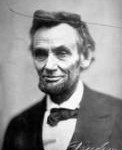 Once a month I attend the Lincoln Group of the District of Columbia. The non-profit group has been around for four score minus three years and is dedicated to sharing the history and study of Abraham Lincoln. As the longest continuously active Lincoln society in the United States the Lincoln Group of DC boasts some of the most notable Lincoln scholars extant.
Once a month I attend the Lincoln Group of the District of Columbia. The non-profit group has been around for four score minus three years and is dedicated to sharing the history and study of Abraham Lincoln. As the longest continuously active Lincoln society in the United States the Lincoln Group of DC boasts some of the most notable Lincoln scholars extant.
Tonight’s dinner will be followed by a presentation on the Supreme Court and the Civil War by Roberta and Lydon Swartzendruber. These two scholars will…
…trace the origin and consequences of this conflict and explore the interactions between the full Supreme Court and the conduct of the war. During his tenure as president, Lincoln appointed five Supreme Court Justices. His appointments, his handling of the court, and the response of the court to the challenge of balancing civil liberties with the war powers of congress and the president, had important consequences for the outcome of the war and for the recovery of the nation following the war.
I’m looking forward to tonight’s event.
More information on the Lincoln Group of the District of Columbia can be found on our web site.
More information on my Abraham Lincoln activities is on my Abraham Lincoln page.
David J. Kent is an avid science traveler and the author of Lincoln: The Man Who Saved America, now available. His previous books include Tesla: The Wizard of Electricity and Edison: The Inventor of the Modern World (both Fall River Press). He has also written two e-books: Nikola Tesla: Renewable Energy Ahead of Its Time and Abraham Lincoln and Nikola Tesla: Connected by Fate.
Check out my Goodreads author page. While you’re at it, “Like” my Facebook author page for more updates!
Follow me by subscribing by email on the home page. Share with your friends using the buttons below.
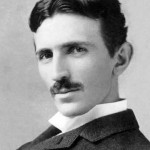 Prior to moving to the United States Nikola Tesla worked for Thomas Edison’s electric company in Paris.
Prior to moving to the United States Nikola Tesla worked for Thomas Edison’s electric company in Paris.
Tesla’s initial time at Continental Edison was spent as a kind of traveling repairman sent to fix some of the tougher problems with the direct current system. Moving about mainly in France and Germany he would “cure the ills” and return to Paris. This experience led him to propose improvements to the dynamos, which he implemented. “My success was complete,” Tesla would write, “and the delighted directors accorded me the privilege of developing automatic regulators which were much desired.” Having quickly built a reputation as someone who could save the day, not to mention his proficiency in the German language, Tesla was the obvious choice to send to Strassburg, Alsace (part of Germany at the time, now Strasbourg, France). A catastrophic event had occurred during the opening ceremony of the new lighting plant at the railroad station, and help was needed fast.
The Strasbourg rail station, originally built in 1846, had just been remodeled in the current year of 1883. Dignitaries, including the aging Emperor William I of Germany, were gathered to watch the newly installed direct current electric lighting system showcase the station. The flip of the switch turned out to be more dramatic than expected, however, and a large part of a wall was collapsed by a huge explosion, nearly taking William with it. Following this major malfunction and a series of other quality control issues – light bulbs were burning out as fast as they could be replaced – the talented Tesla was dispatched to see what he could do to repair the damage, both to the direct current system and the sensitivities of the Alsace people.
Tesla took on the task of correcting the problem and spent nearly a year redesigning the generators and reinstalling the lighting system. Then, with the Strasbourg rail station now fully lit and accepted by the Alsace government, Tesla “returned to Paris with pleasing anticipations.”
David J. Kent has been a scientist for over thirty years, is an avid science traveler, and an independent Abraham Lincoln historian. He is the author of Tesla: The Wizard of Electricity and the e-book Nikola Tesla: Renewable Energy Ahead of Its Time. He is currently writing a book on Thomas Edison.
Follow me by subscribing by email on the home page. And feel free to “Like” my Facebook author’s page and connect on LinkedIn. Share with your friends using the buttons below.
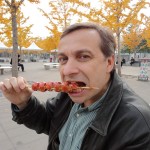 I must admit – the experience of becoming an author is a bit surreal.
I must admit – the experience of becoming an author is a bit surreal.
The next step in this experience is creating a Facebook “Author’s Page.” I still have my personal Facebook page, but now I also have a separate page devoted solely to my writing.
You can find the page here: David J. Kent
If you want to follow the process, and my progress, of becoming an author and read about my upcoming books, please “Like” my new page. I promise not to sell you to advertisers (like I could even figure out how to do that anyway). If you “Like” the page Facebook will make sure you get my occasional updates, upcoming appearances, tips and critically important facts, and even free stuff. Seriously, what could be cooler than that?
Needless to say the new author page is a work in progress, which reflects both the development of my writing career and the pace at which I can figure out how to work all the cool stuff that author’s pages let you do. Or at least the cool stuff that I think author’s pages let you do. As soon as I figure out how to do it.
Thanks in advance for being on the ground floor of a work in progress that could rival the new Freedom Tower in New York City. Yes, it is that cool.